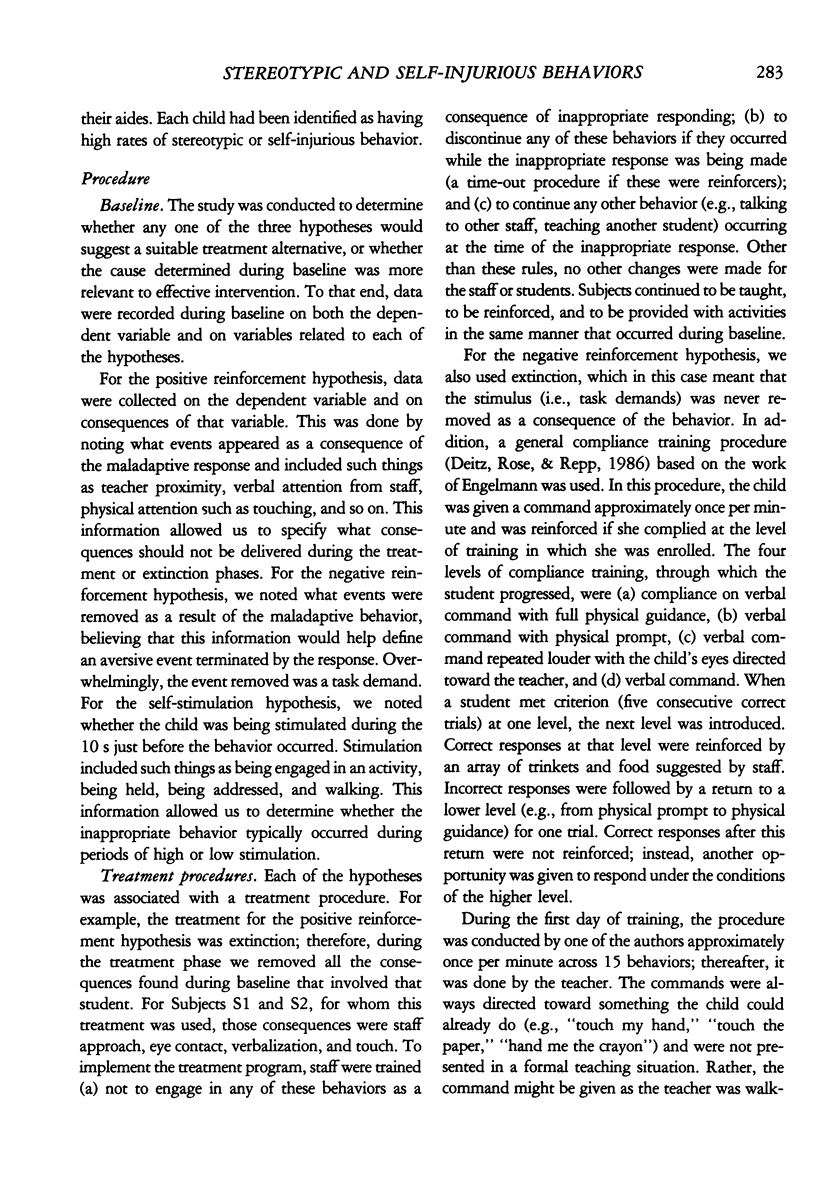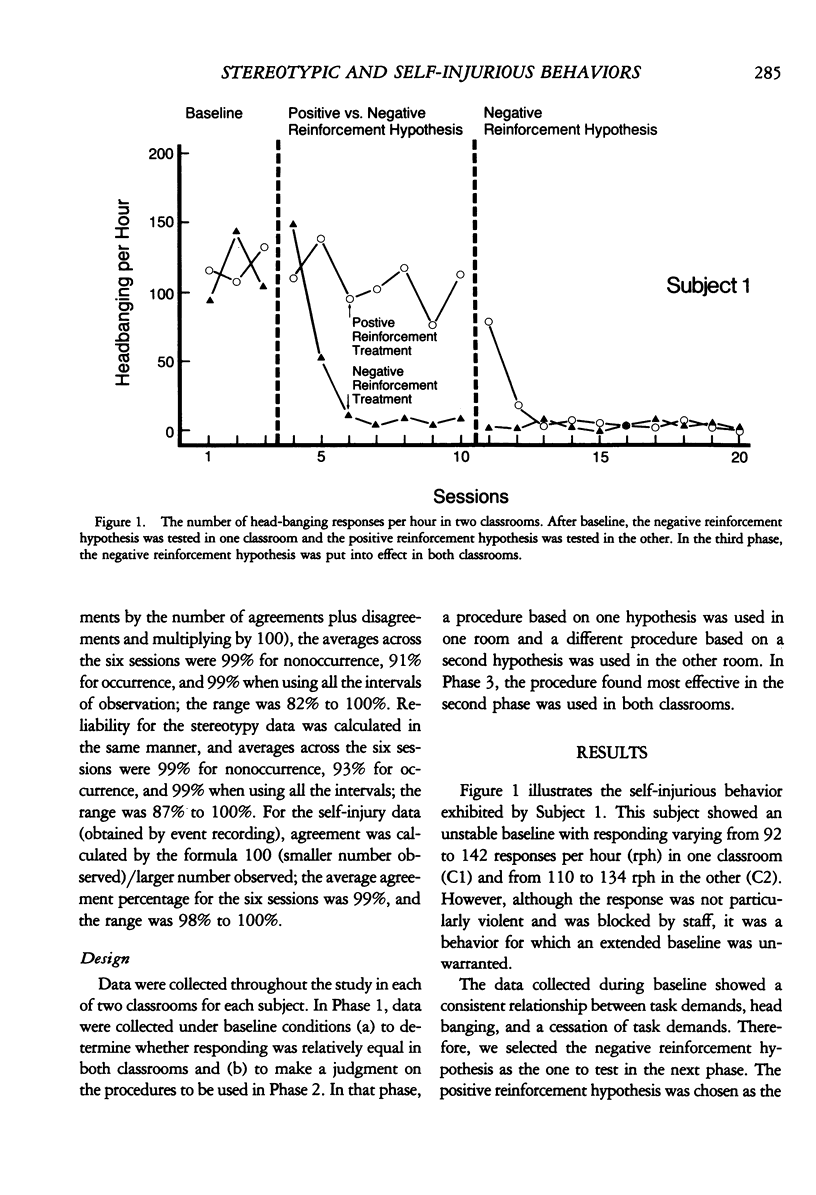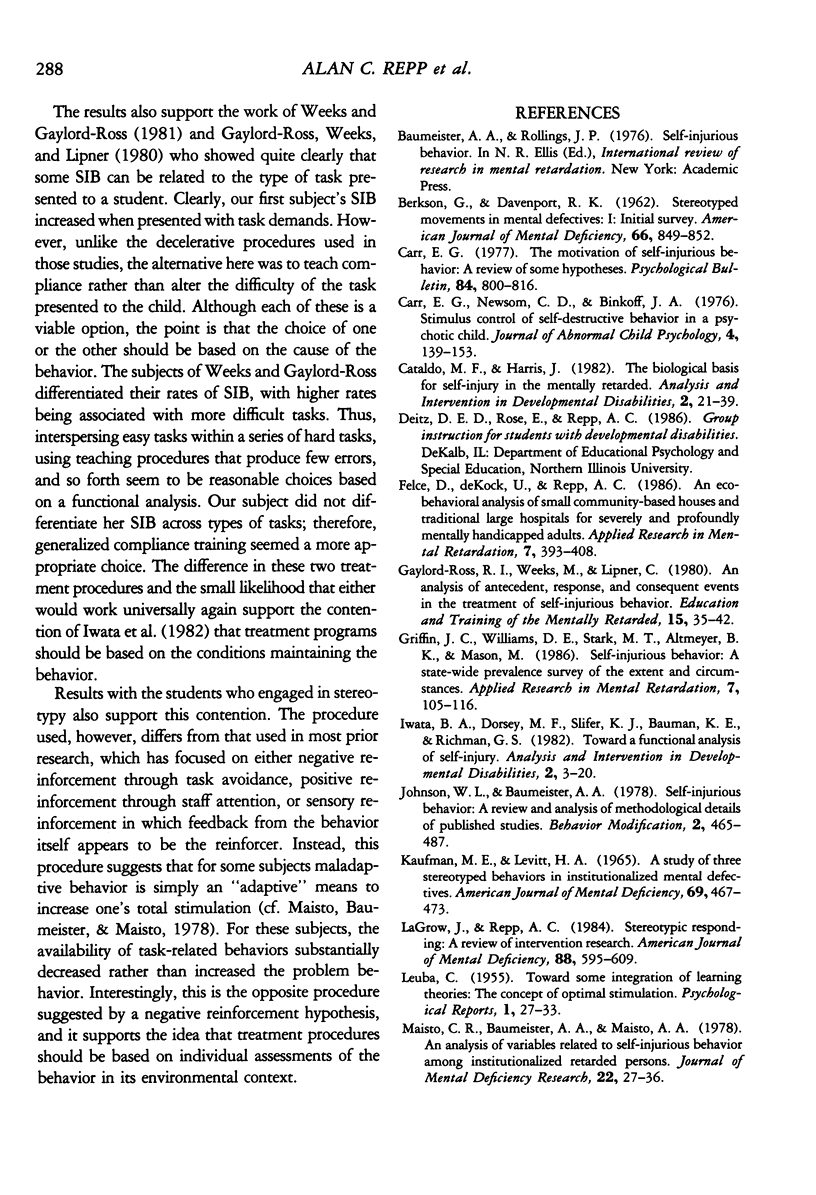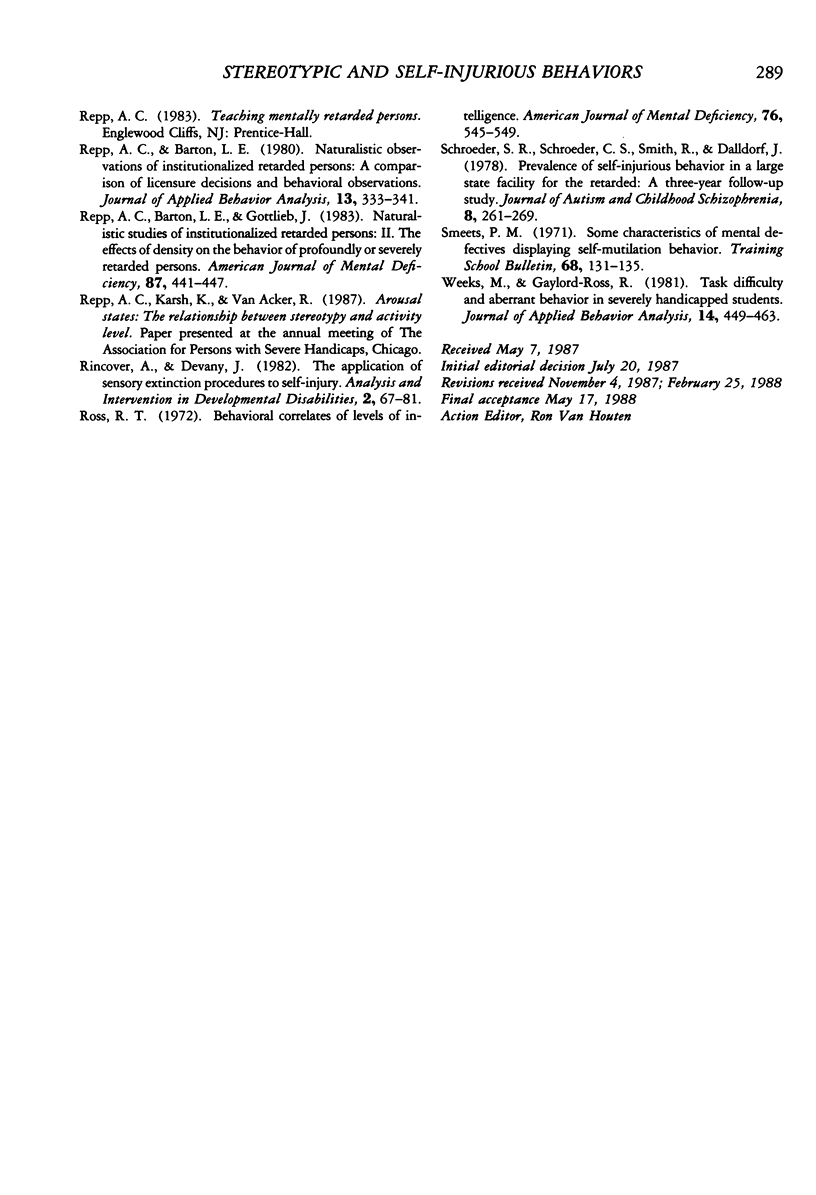Abstract
Stereotypic and self-injurious behaviors are common forms of maladaptive responding demonstrated by severely handicapped persons. Various review papers suggest that no single treatment procedure is universally effective. Although there may be many reasons for this finding, one could be that people engage in these behaviors for various reasons, and that procedures that are incompatible with the cause of the behavior are unlikely to be effective. These studies also suggest many hypotheses for the development and maintenance of these behaviors, three of which are the self-stimulation, positive reinforcement, and negative reinforcement hypotheses. The purpose of this paper was to determine whether one of these hypotheses could be matched to the cause of the behavior and used as an effective treatment procedure. We therefore compared one hypothesis with one other for 3 subjects in a three-phase study. During baseline, data were taken in two classrooms for each subject, and a judgement was made about the hypothesis most likely to be related to the cause of the behavior. During the second phase, a treatment based on that hypothesis was used in one classroom, and a treatment based on another hypothesis was used in the second classroom. During the third phase, the treatment that was most effective in the second phase was used in both classrooms. Results showed that a successful treatment program can be developed on an hypothesis of why the behavior occurred during baseline. Results are discussed in terms of supporting the argument that treatment programs should be based on a functional analysis of the behavior in its environmental context.
Full text
PDF








Selected References
These references are in PubMed. This may not be the complete list of references from this article.
- BERKSON G., DAVENPORT R. K., Jr Stereotyped movements of mental defectives. I. Initial survey. Am J Ment Defic. 1962 May;66:849–852. [PubMed] [Google Scholar]
- Carr E. G., Newsom C. D., Binkoff J. A. Stimulus control of self-destructive behavior in a psychotic child. J Abnorm Child Psychol. 1976;4(2):139–153. doi: 10.1007/BF00916518. [DOI] [PubMed] [Google Scholar]
- Carr E. G. The motivation of self-injurious behavior: a review of some hypotheses. Psychol Bull. 1977 Jul;84(4):800–816. [PubMed] [Google Scholar]
- Felce D., de Kock U., Repp A. C. An eco-behavioral analysis of small community-based houses and traditional large hospitals for severely and profoundly mentally handicapped adults. Appl Res Ment Retard. 1986;7(4):393–408. doi: 10.1016/s0270-3092(86)80013-3. [DOI] [PubMed] [Google Scholar]
- Griffin J. C., Williams D. E., Stark M. T., Altmeyer B. K., Mason M. Self-injurious behavior: a state-wide prevalence survey of the extent and circumstances. Appl Res Ment Retard. 1986;7(1):105–116. doi: 10.1016/0270-3092(86)90022-6. [DOI] [PubMed] [Google Scholar]
- KAUFMAN M. E., LEVITT H. A STUDY OF THREE STEREOTYPED BEHAVIORS IN INSTITUTIONALIZED MENTAL DEFECTIVES. Am J Ment Defic. 1965 Jan;69:467–473. [PubMed] [Google Scholar]
- LaGrow S. J., Repp A. C. Stereotypic responding: a review of intervention research. Am J Ment Defic. 1984 May;88(6):595–609. [PubMed] [Google Scholar]
- Maisto C. R., Baumeister A. A., Maisto A. A. An analysis of variables related to self-injurious behaviour among institutionalised retarded persons. J Ment Defic Res. 1978 Mar;22(1):27–36. doi: 10.1111/j.1365-2788.1978.tb00960.x. [DOI] [PubMed] [Google Scholar]
- Repp A. C., Barton L. E., Gottlieb J. Naturalistic studies of institutionalized profoundly or severely mentally retarded persons: the relationship of density and behavior. Am J Ment Defic. 1983 Jan;87(4):441–447. [PubMed] [Google Scholar]
- Repp A. C., Barton L. E. Naturalistic observations of institutionalized retarded persons: a comparison of licensure decisions and behavioral observations. J Appl Behav Anal. 1980 Summer;13(2):333–341. doi: 10.1901/jaba.1980.13-333. [DOI] [PMC free article] [PubMed] [Google Scholar]
- Ross R. T. Behavioral correlates of levels of intelligence. Am J Ment Defic. 1972 Mar;76(5):545–549. [PubMed] [Google Scholar]
- Schroeder S. R., Schroeder C. S., Smith B., Dalldorf J. Prevalence of self-injurious behaviors in a large state facility for the retarded: a three-year follow-up study. J Autism Child Schizophr. 1978 Sep;8(3):261–269. doi: 10.1007/BF01539629. [DOI] [PubMed] [Google Scholar]
- Smeets P. M. Some characteristics of mental defectives displaying self-mutilative behaviors. Train Sch Bull (Vinel) 1971 Aug;68(2):131–135. [PubMed] [Google Scholar]
- Weeks M., Gaylord-Ross R. Task difficulty and aberrant behavior in severely handicapped students. J Appl Behav Anal. 1981 Winter;14(4):449–463. doi: 10.1901/jaba.1981.14-449. [DOI] [PMC free article] [PubMed] [Google Scholar]


